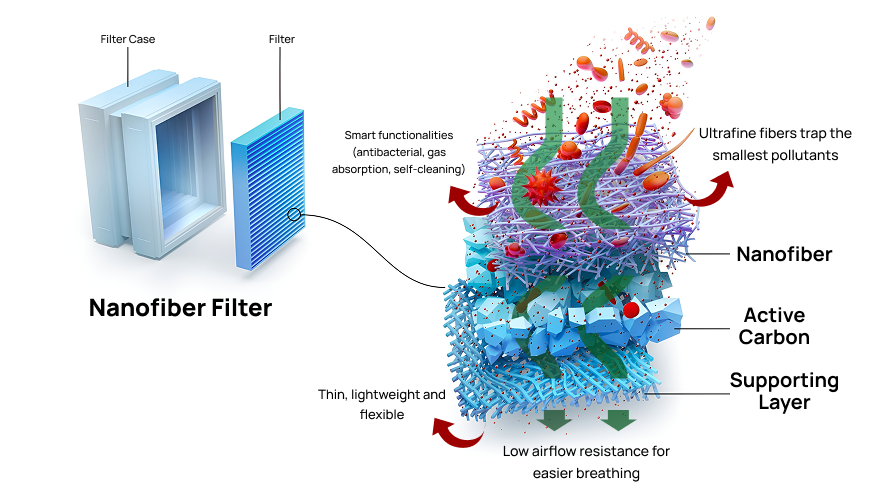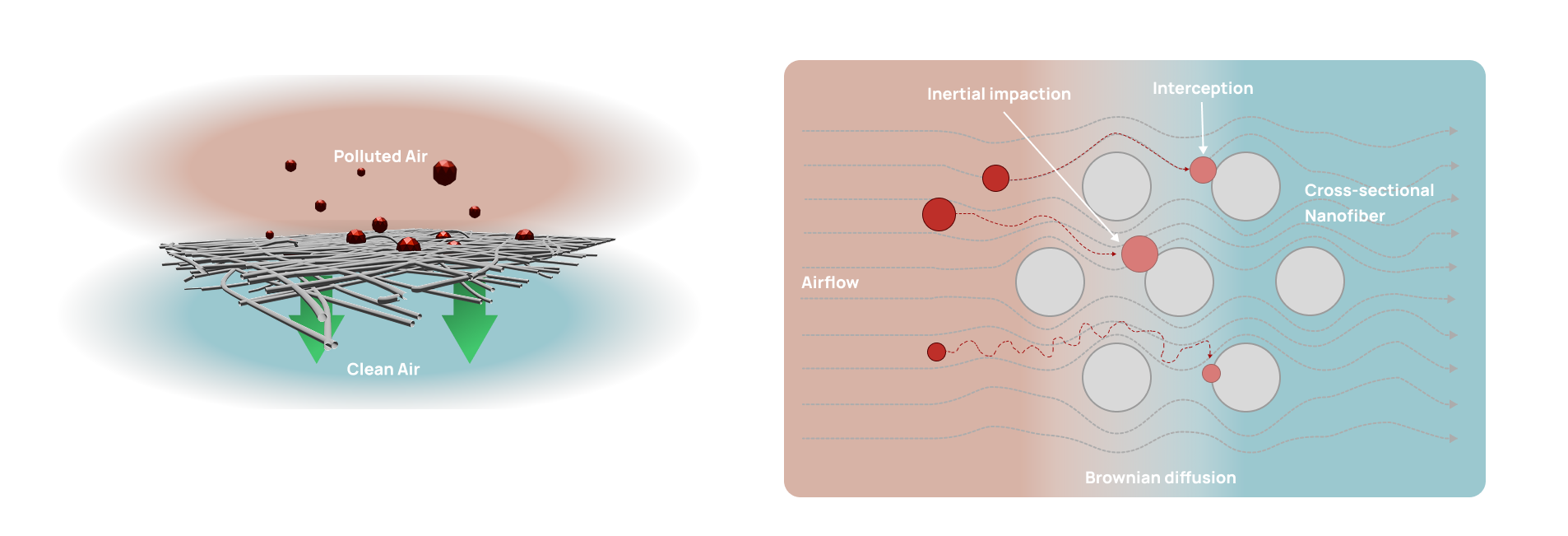Why Clean Air Matters More Than Ever
In today’s world, where air pollution continues to rise and health risks from airborne particles are increasing, the demand for advanced filtration technology has never been greater. Traditional woven filters, once the go-to solution, are now facing a formidable challenger: nanofiber filtration, leading the transition to smarter, thinner, and more efficient air purification systems.
Why Nanofiber is the Ultimate Solution
Traditional filters (commonly woven filters) come with a set of limitations:
- ❌ Struggle to capture ultrafine particles like PM2.5 and PM0.3
- ❌ Block airflow, making breathing difficult in enclosed environments
- ❌ Often thick and bulky, limiting their integration into compact devices
- ❌ Passive function, offering no active contribution to air quality
On the other hand, nanofiber membranes offer a host of groundbreaking advantages:
- ✅ Ultrafine fiber networks that trap pollutants invisible to the naked eye
- ✅ Low airflow resistance, allowing for easier and healthier breathing
- ✅ Smart functionalities like antibacterial coatings, gas adsorption, and even self-cleaning properties
- ✅ Thin, lightweight, and flexible, suitable for modern applications—from face masks to HVAC systems

Fig. 1 Nanofiber applications as an air filter
Related Read: HEPA vs Nanofiber Filter
How Nanofiber Air Filtration Works
Electrospinning method produces fibers that are as thin as 100 nanometers. In fact, they are approximately 1,000 times finer than a single strand of human hair.

Fig.2 How nanofiber filter traps ultrafine particles
Consequently, this structure forms an exceptionally effective barrier against a wide range of airborne pollutants. For this reason, it physically trap fine dust and harmful particles, but it also maintains high breathability.
The Future is Nano: Where We’re Headed
As nanotechnology continues to evolve, the future of air filtration lies in intelligent, multifunctional systems. Nanofiber membranes are not just passive barriers; they are becoming active agents of purification. With potential integration into IoT devices, AI monitoring systems, and sustainable recycling processes, nanofibers represent a quantum leap in how we breathe, live, and protect our planet.
Ready to Breathe Smarter and Cleaner?
📲 Follow us to explore more about nanofiber innovations, upcoming applications, and electrospinning advancements.


